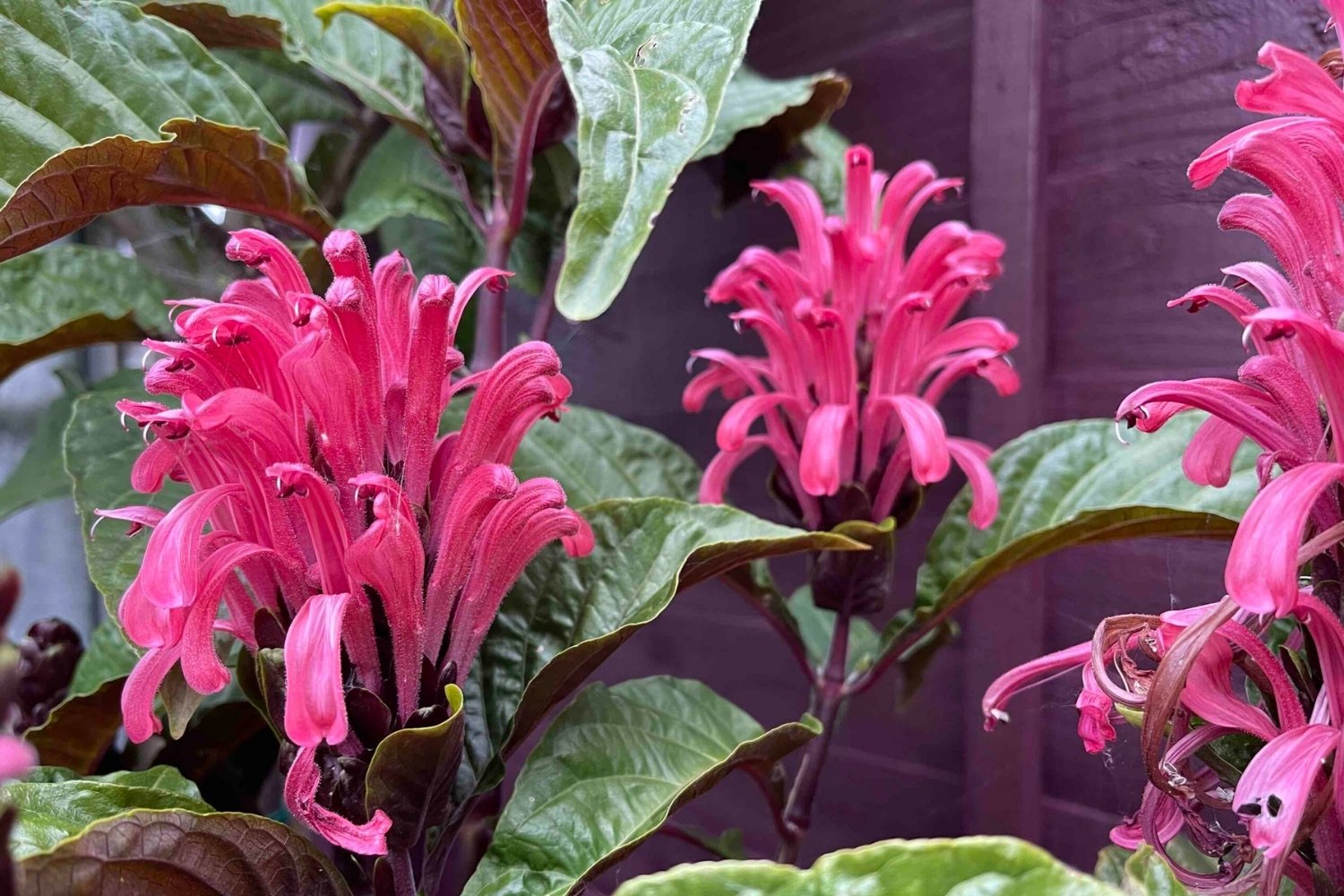
Justicia is a fascinating plant genus with over 600 species, known for its vibrant flowers and unique foliage. Did you know that Justicia belongs to the Acanthaceae family, which thrives in tropical and subtropical regions? These plants are not just pretty faces; they play crucial roles in their ecosystems. Some species attract pollinators like hummingbirds and butterflies, while others have medicinal uses. Ever wondered why Justicia is often called "shrimp plant"? It's because of the shrimp-like appearance of its bracts! Whether you're a gardening enthusiast or just curious about nature, learning about Justicia can be both fun and educational. Ready to dive into 28 intriguing facts about this amazing plant? Let's get started!
28 Facts About Justicia
Justicia is a fascinating genus of flowering plants in the Acanthaceae family. These plants are known for their vibrant flowers and unique characteristics. Let's dive into some intriguing facts about Justicia.
Origin and Distribution
Justicia plants are found in various parts of the world, each with its own unique traits.
- Native Regions: Justicia species are primarily native to tropical and subtropical regions, including Central and South America, Africa, and Asia.
- Diverse Habitats: These plants thrive in diverse habitats, from rainforests to dry savannas, showcasing their adaptability.
- Global Spread: Due to their ornamental value, Justicia species have been introduced to gardens and greenhouses worldwide.
Botanical Characteristics
Understanding the botanical features of Justicia can help appreciate their beauty and complexity.
- Flower Structure: Justicia flowers are tubular and often brightly colored, attracting pollinators like hummingbirds and butterflies.
- Leaf Arrangement: The leaves are typically opposite, meaning they grow in pairs on either side of the stem.
- Growth Habit: These plants can be herbaceous or woody, with some species growing as shrubs or small trees.
Popular Species
Several Justicia species are popular in horticulture and have unique attributes.
- Justicia brandegeeana: Known as the shrimp plant, it has bracts that resemble shrimp, making it a favorite in gardens.
- Justicia carnea: Also called the Brazilian plume, this species boasts large, pink flower spikes.
- Justicia adhatoda: Commonly known as Malabar nut, it is valued for its medicinal properties.
Ecological Importance
Justicia plants play significant roles in their ecosystems.
- Pollinator Attraction: Their vibrant flowers attract essential pollinators, aiding in the reproduction of various plant species.
- Habitat Provision: These plants provide shelter and food for numerous insects and small animals.
- Soil Stabilization: Some Justicia species help prevent soil erosion with their extensive root systems.
Medicinal Uses
Many Justicia species have been used in traditional medicine for centuries.
- Respiratory Ailments: Justicia adhatoda is used in Ayurvedic medicine to treat respiratory issues like asthma and bronchitis.
- Anti-inflammatory Properties: Extracts from certain species have shown anti-inflammatory effects, useful in treating various conditions.
- Antimicrobial Activity: Some Justicia species possess antimicrobial properties, making them valuable in herbal medicine.
Cultivation and Care
Growing Justicia plants can be rewarding with the right knowledge.
- Light Requirements: Most Justicia species prefer bright, indirect light but can tolerate some shade.
- Watering Needs: These plants thrive in moist soil but require good drainage to prevent root rot.
- Temperature Tolerance: Justicia plants generally prefer warm temperatures and can be sensitive to frost.
Interesting Tidbits
Here are some lesser-known facts that make Justicia even more fascinating.
- Name Origin: The genus name "Justicia" honors James Justice, an 18th-century Scottish horticulturist.
- Cultural Significance: In some cultures, Justicia species are used in rituals and traditional ceremonies.
- Varied Uses: Beyond ornamental and medicinal uses, some species are used in dye production and as natural insect repellents.
Conservation Status
The conservation status of Justicia species varies, with some facing threats.
- Endangered Species: Habitat loss and overharvesting have put certain Justicia species at risk of extinction.
- Conservation Efforts: Botanical gardens and conservation organizations are working to protect and propagate endangered species.
- Sustainable Practices: Promoting sustainable harvesting and cultivation practices can help preserve these plants for future generations.
Fun Facts
Let's end with some fun and quirky facts about Justicia.
- Hummingbird Magnet: The tubular flowers of Justicia are particularly attractive to hummingbirds, making them a favorite in bird-friendly gardens.
- Color Variety: Justicia flowers come in a wide range of colors, including red, pink, yellow, and white.
- Easy Propagation: Many Justicia species can be easily propagated from cuttings, making them accessible for home gardeners.
- Long Blooming Season: With proper care, Justicia plants can bloom for extended periods, adding continuous color to gardens and landscapes.
The Final Word on Justicia
Justicia is a fascinating plant genus with a lot to offer. From its vibrant flowers to its medicinal properties, it’s clear why it’s a favorite among gardeners and botanists alike. These plants thrive in various environments, making them versatile additions to any garden. They also play a role in traditional medicine, offering natural remedies for various ailments. Understanding Justicia’s unique characteristics can help you appreciate its beauty and utility even more. Whether you’re a seasoned gardener or just starting, incorporating Justicia into your plant collection can bring both aesthetic and practical benefits. So next time you’re looking to add a splash of color or a touch of nature’s healing power to your space, consider Justicia. It’s more than just a pretty plant; it’s a testament to nature’s incredible diversity and resilience.
Was this page helpful?
Our commitment to delivering trustworthy and engaging content is at the heart of what we do. Each fact on our site is contributed by real users like you, bringing a wealth of diverse insights and information. To ensure the highest standards of accuracy and reliability, our dedicated editors meticulously review each submission. This process guarantees that the facts we share are not only fascinating but also credible. Trust in our commitment to quality and authenticity as you explore and learn with us.
